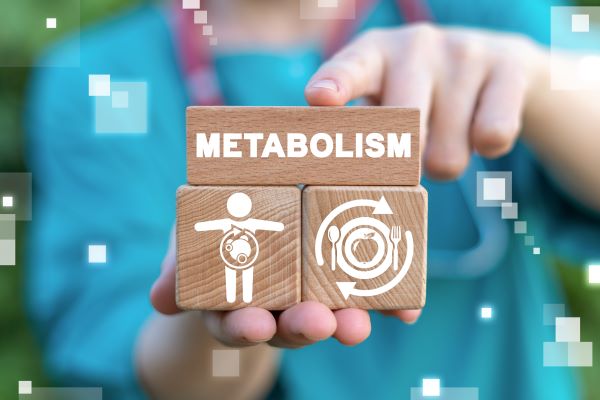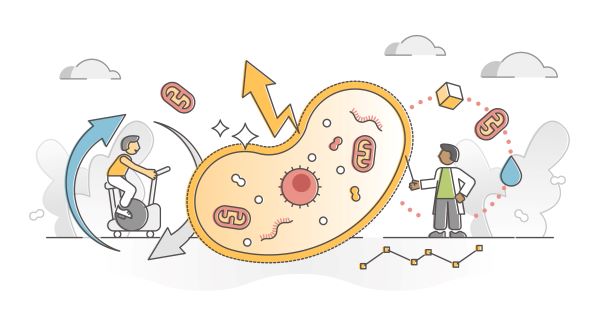Catabolism is a type of metabolic reaction, one that takes place inside all living cells. Catabolic reactions involve the breakdown of large, organic molecules into smaller, simpler ones, accompanied by a release of energy.
The other type of metabolic reaction, anabolism, involves the building of complex, organic molecules from smaller components, and requires an input of energy.

Examples of Catabolic Reactions
Catabolism is a series of biochemical reactions that break down large, complex molecules into smaller, simple ones. Catabolic reactions often use hydrolysis to break the chemical bonds within larger molecules, which results in a release of energy. Approximately 40% of the energy released is transferred directly into adenosine triphosphate (ATP) molecules. The rest of the energy produced by catabolism is released as heat energy, which is then absorbed by body tissues and fluids.
Cells, therefore, use catabolic processes to generate energy or to fuel anabolic processes (which are energy-dependent).
Two key examples of catabolic reactions are digestion and cellular respiration.
Digestion

The digestion of food is a key example of catabolism. During digestion, large, complex food molecules are broken down into smaller components, and energy is released as a result. For example:
- Complex carbohydrates are broken down into simple sugars
- Proteins are broken down into amino acids
- Lipids are broken down into fatty acids and glycerol
Each of these reactions also releases energy, which the organism uses for the growth and repair of cells. Some of the smaller molecules released by digestion (for example, glucose) may be broken down further to release yet more energy. Others are used in anabolic reactions to build new products.
Cellular Respiration

Cellular respiration is another vital catabolic process and one that takes place within all living cells. This reaction involves the breaking down of glucose to release energy, which is then used to power all other reactions that take place in the cell.
There are two types of cellular respiration; aerobic respiration, and anaerobic respiration. Aerobic respiration uses oxygen and aerobic respiration does not, but both are examples of a catabolic reaction.
